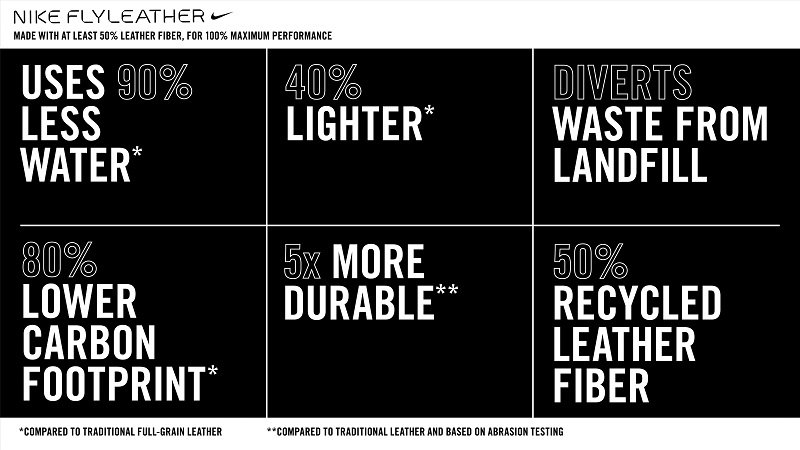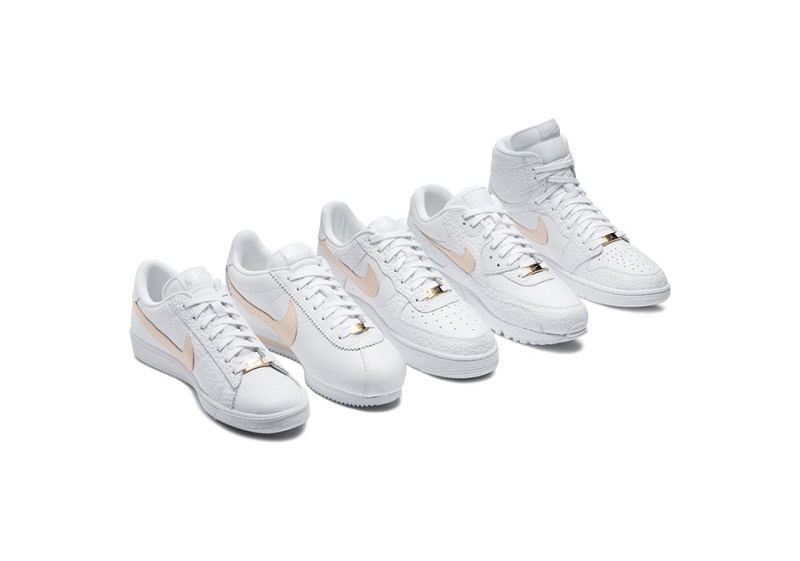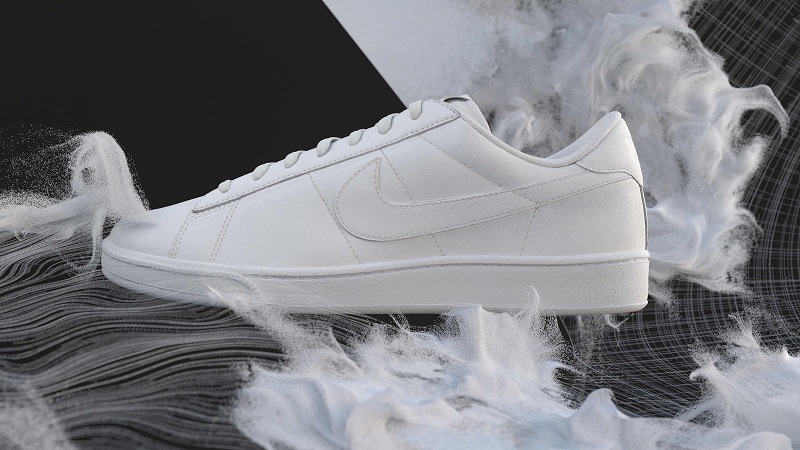Nike’s Flyleather Shoe is a Sustainable Way to Strut
In these modern times, sustainable design is one of almost every manufacturer’s main concerns, whether it’s in respect to electronics, architecture, or clothing. As one of the biggest names in athletics manufacturing, Nike is responsible for the mass production of a staggering amount of footwear, clothing, and accessories, so it’s no wonder that it’s constantly looking for new ways to increase the sustainability of the items it produces. There are, of course, a number of ways to do this: by reducing the amount energy required to manufacture its goods, by incorporating recycling processes into its manufacturing, and by using more sustainable materials in the production of its footwear and clothing. Enter Nike’s Flyleather shoe.

Nike reportedly sells an incredible 120,000,000 pairs of shoes each year, so you can imagine the amount of material and manufacturing processes required to successfully produce, ship, and sell such vast amounts of footwear. In an effort to make some of its shoes’ most essential aspects more environmentally-friendly, Nike got a British eco-manufacturer on board to create a new sustainable material for them. The company claims that it’s “the greatest advance in leather, since leather.”

“Flyleather” is made up of 50 percent recycled leather fibers and 50 percent synthetic fibers, and it uses 90 percent less water in its production than regular leather does while leaving a carbon footprint one-fifth of the size of that left by traditionally-manufactured materials. These stats are already a significant win for Flyleather on the sustainable front, but this leather alternative also succeeds in terms of its durability. It’s 40 percent lighter than real leather and five times more abrasion-resistant, meaning you’re guaranteed to get more wear out of Flyleather in the long run.


Nike’s engineered material has all the same characteristics of real leather (apart from the smell). It looks and feels the same, but it has the added benefit of being better for the planet. The shoe behemoth’s footwear manufacturing process creates about 15 percent waste leather, all of which can now be reused to make Flyleather. The company’s initial goal was to create a new type of leather that had the properties of some of its most demanding performance materials, such as Flyknit, without having to sacrifice the characteristics of actual leather that make it so appealing to the public. This concept, coupled with the desire to create a new manufacturing process that would make such a material possible, has resulted in a completely innovative system in terms of both production and the product itself.

Nike’s Director of Materials Technology says that Flyleather is the brand’s most sustainable leather to date — a pretty bold statement coming from a company that prides itself on being at the vanguard of creating innovative materials in the athletics industry. Flyleather is currently being used in the production of Nike Flyleather Tennis Classic, which is retailing at $85. Some other limited edition Flyleather sneakers may also be lurking online, including the Air Force 1, Air Max 90, Cortez, and Jordan 1. Who knows, Flyleather might just be the future of all new Nike sneakers.




